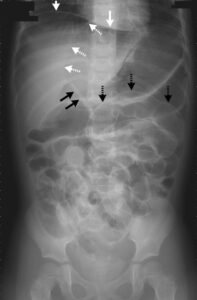This article is an answer so the Case – Recurrent Blisters on Both Legs
The clinical and histopathologic presentation is consistent with bullous impetigo, a bullous form of a superficial cutaneous infection most commonly due to Staphylococcus aureus. Non-bullous impetigo, which is more common, is due to S. aureus and Streptococcus pyogenes.
Bullous impetigo is characterized by small vesicles that enlarge into flaccid bullae that rupture and leave behind a collarette of scale. There is typically minimal surrounding erythema and no systemic symptoms, although some patients may have associated fever and weakness.
Bullous impetigo is most often seen in neonates, but may also be seen in children and adolescents as well as immunocompromised patients or patients with chronic renal disease. In these patients, the exfoliative toxin can become disseminated and lead to the development of staphylococcal scalded skin syndrome.
Complications
In about 5% of cases, non-bullous impetigo caused by S. pyogenes can be complicated by acute post-streptococcal glomerulonephritis.
Treatment
Uncomplicated bullous impetigo is self-limited and resolves without scarring in 3–6 weeks. Topical antibiotics such as mupirocin appear to be as efficacious as systemic antibiotics in limited cutaneous disease.
For complicated impetigo, first-line therapy is ceftriaxone by intravenous (IV) administration, and second-line therapy is ampicillin/sulbactam or cefuroxime.


